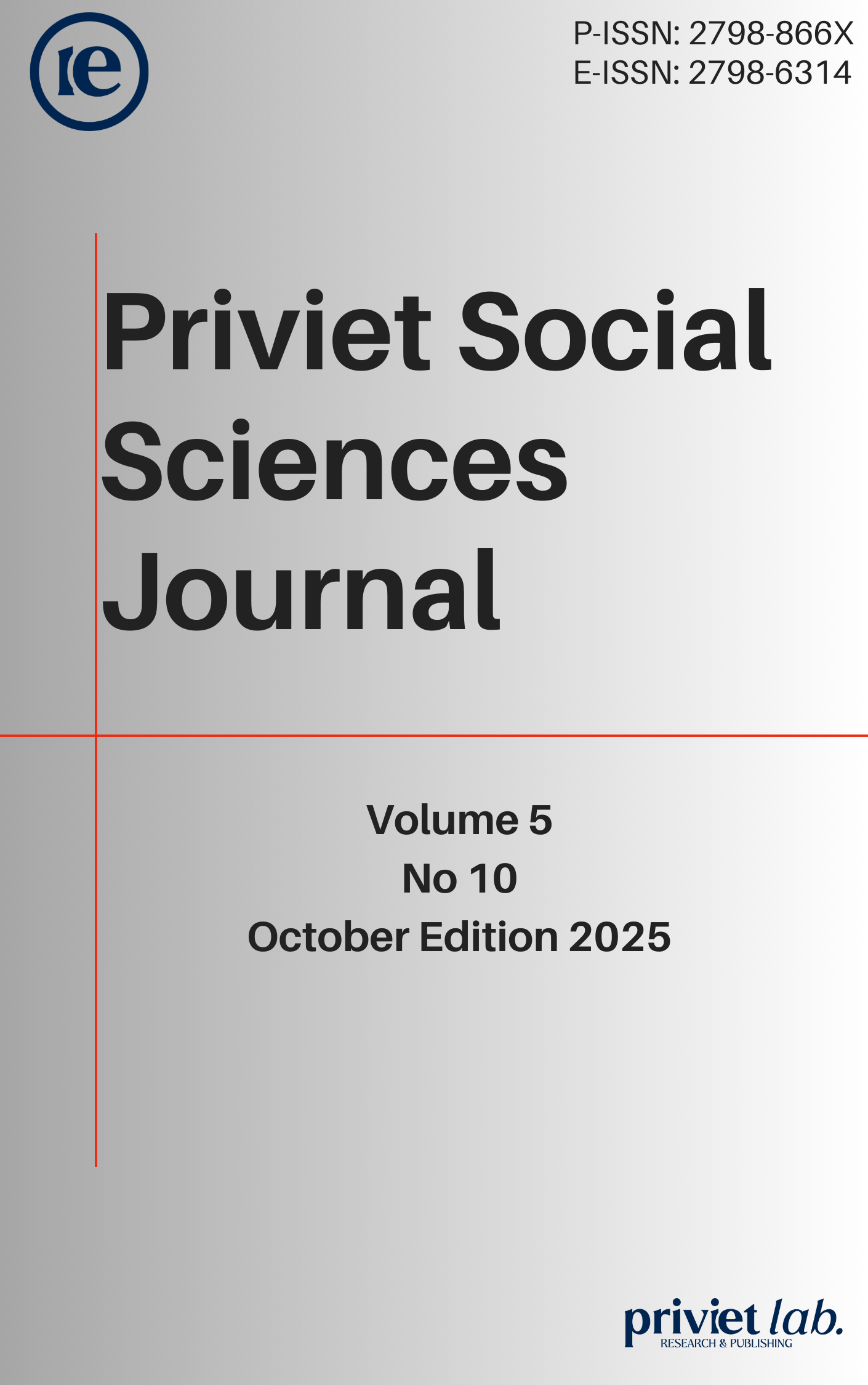Dual use satellites in the Ukraine conflict: The dilemma between state sovereignty and the principle of non-militarization of outer space
DOI:
https://doi.org/10.55942/pssj.v5i10.715Keywords:
dual-use satellites, international law, outer space treaty, Ukraine conflict, airspace sovereigntyAbstract
The increasing reliance on commercial satellite networks during armed conflicts has revealed substantial deficiencies in international space law. The Russia–Ukraine conflict serves as a pivotal case study, wherein Ukraine's utilization of SpaceX's Starlink satellite constellation for military communications obscured the distinction between civilian and military objects. This dual-use characteristic poses challenges to the traditional principles of international law, including state sovereignty over airspace, as delineated by the 1944 Chicago Convention, the freedom of outer space, as established by the 1967 Outer Space Treaty, and the principle of distinction under international humanitarian law. This study employs doctrinal legal analysis to assess whether dual-use satellites should be deemed legitimate military targets and to what extent states are accountable for the actions of private space actors. It contends that existing frameworks inadequately address the militarization risks posed by commercial satellites in low Earth orbit. The study concludes that new normative measures – whether through treaty amendments, interpretive declarations, or soft law instruments – are urgently needed to reconcile the competing principles of state sovereignty, civilian protection, and non-militarization of outer space.
References
Bílková, V. (2023). The conflict in Ukraine: Implications for jus in bello and human rights law. Journal of International Humanitarian Legal Studies, 32(1), 45–72. https://doi.org/10.1163/22116133-03201010
Boothby, W. H. (2019). New technologies and the law in war and peace. Journal of Conflict and Security Law, 24(3), 473–498. https://doi.org/10.1093/jcsl/krz018
Convention on International Civil Aviation (“Chicago Convention”), Dec. 7, 1944, 15 U.N.T.S. 295.
Convention on International Liability for Damage Caused by Space Objects (“Liability Convention”), Mar. 29, 1972, 961 U.N.T.S. 187.
Ferreira-Snyman, A. (2018). Selected legal challenges relating to the military use of outer space, with specific reference to the South African perspective. Potchefstroom Electronic Law Journal, 21(1), 1–41. https://doi.org/10.17159/1727-3781/2018/v21i0a5672
Gerałt, B. (2024). Starlink’s provision of telecommunication services during the time of armed conflict and its consequences from the perspective of public international law. Acta Universitatis Lodziensis. Folia Iuridica, 106(11), 195–213. https://doi.org/10.18778/0208-6069.106.11
Grunert, J. (2025). International humanitarian law in space. Elgar Concise Encyclopedia of Space Law, 241–255. https://doi.org/10.4337/9781802207361.00042
Grünfeld, K. (2022). NewSpace: The Star Wars soldier of the future? Proceedings of the International Institute of Space Law, 65(7), 110–127. https://doi.org/10.5553/iisl/2022065007010
Hong, J. (2022). A study on international law on the space weaponization in the New-Space era: Focusing on the principles of international humanitarian law. Hapshin Theological Review, 33(1), 161–188. https://doi.org/10.35227/hylr.2022.2.33.1.161
Jakhu, R., & Pelton, J. N. (2020). Global space governance: An international study. Springer. https://link.springer.com/content/pdf/10.1007/978-3-319-54364-2.pdf
Kawagishi, S. (2023). The qualification of the Ukraine conflict in international humanitarian law. In International Humanitarian Law and Armed Conflicts in the 21st Century (pp. 205–225). Springer. https://doi.org/10.1007/978-981-99-4374-6_13
Protocol Additional to the Geneva Conventions of 12 August 1949, and relating to the Protection of Victims of International Armed Conflicts (“Additional Protocol I”), June 8, 1977, 1125 U.N.T.S. 3.
Semenchuk, M. R. (2024). International military-space cooperation of Ukraine: Legal aspects. Visegrad Journal on Human Rights, 1(14), 220–239. https://doi.org/10.61345/1339-7915.2024.1.14
Schmitt, M. N. (2022). War and peace in outer space: Legal norms and current state practice. Harvard National Security Journal, 13(1), 1–37.
Stephens, D., & Steer, C. (2015). Conflicts in space: International humanitarian law and its application to space warfare. Social Science Research Network. https://ssrn.com/abstract=2696435
Singh, A. (2021). Legal implications of low Earth orbit operations: Airspace or outer space? Space Policy, 57, 101429. https://doi.org/10.1016/j.spacepol.2021.101429
Treaty on Principles Governing the Activities of States in the Exploration and Use of Outer Space, including the Moon and Other Celestial Bodies (“Outer Space Treaty”), Jan. 27, 1967, 610 U.N.T.S. 205.
United Nations Committee on the Peaceful Uses of Outer Space (COPUOS). (2019). Guidelines for the long-term sustainability of outer space activities. United Nations.
Van de Put, S., & Siemensma, A. R. E. (2024). A giant leap for humankind: Bridging space law and international humanitarian law. Revue de droit militaire et de droit de la guerre, 62(1), 45–70. https://doi.org/10.4337/mllwr.2024.01.02
Von der Dunk, F. G. (2020). International space law. Wolters Kluwer.
Williams, A. (2023, March 15). How Starlink is helping Ukraine’s war effort. The Guardian. https://www.theguardian.com/technology/2023/mar/15/starlink-ukraine-elon-musk
Downloads
Published
How to Cite
Issue
Section
License
Copyright (c) 2025 Nuriyah Fara Muthia, Afif Muhni, Nurisnah H.

This work is licensed under a Creative Commons Attribution 4.0 International License.

















